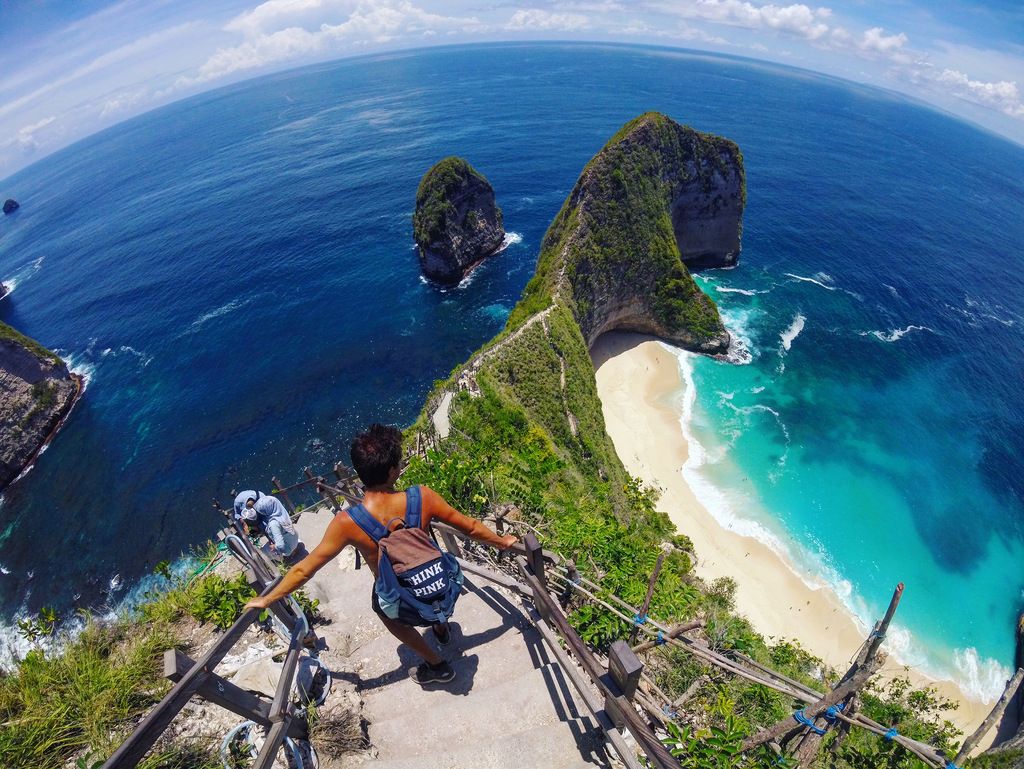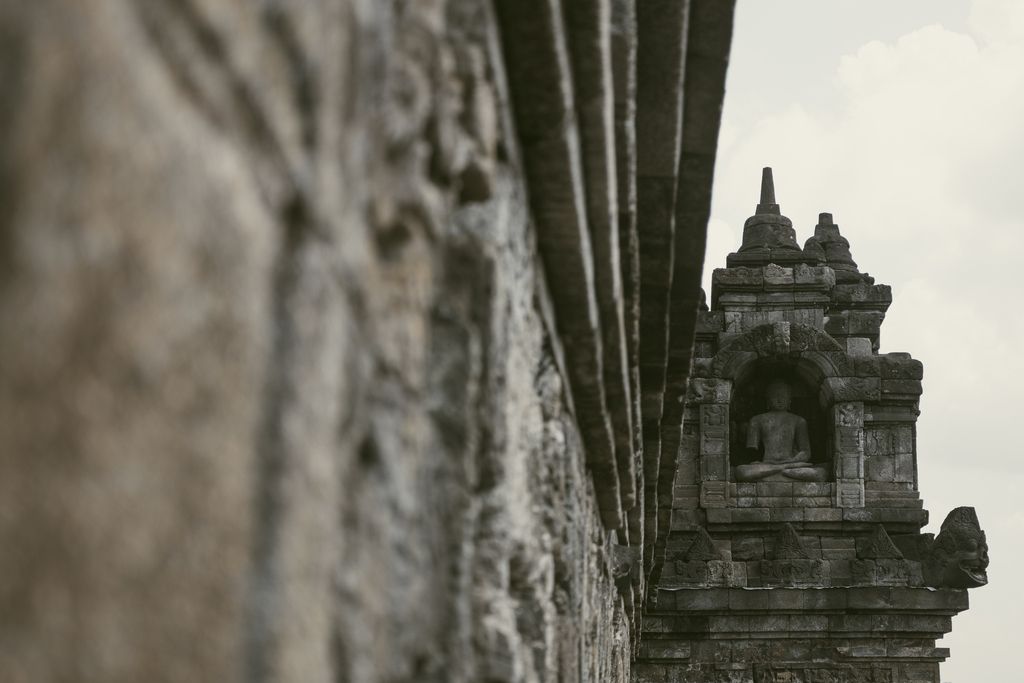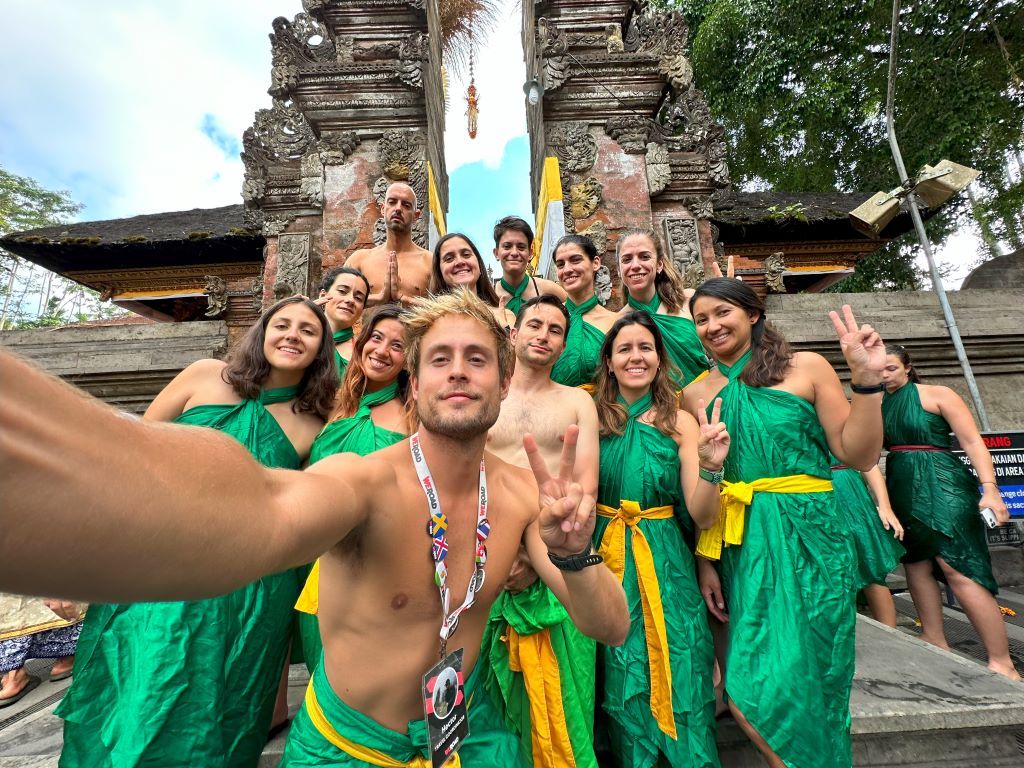

No one travels to Indonesia for paperwork — yet here we are, talking visas before volcanoes.
Luckily, getting an Indonesian visa isn’t the test of patience it once was. In recent years, the government has stripped away the red tape, leaving behind a process so simple it almost feels suspiciously modern.
But here’s the thing: whether you’re diving in Bali, trekking around Sumatra, or being eaten by dragons (the Komodo kind), you still have to mind the paperwork. Not very much, thankfully. Not anymore. Travelling to Indonesia is now one of the simplest visa situations in Southeast Asia. The process essentially offers two choices for tourists: the VoA (Visa on Arrival) and the e-VOA, both designed for efficient travellers who don’t have time to queue when they could be out floating in turquoise water.
This guide tells you precisely what you need to do — who’s eligible, what documents you need, the cost, and airport formalities. That way, you can sail through immigration and get back to worrying about sunscreen and smoothie orders.

Do you need a Visa for Indonesia? understanding the basics of entry
Indonesia’s love for visitors is matched only by its appetite for order. The government categorises arrivals into neat boxes: those who can enter visa-free, those eligible for a visa on arrival, and those who need to apply in advance.
Citizens of all ASEAN countries (Singapore, Malaysia, the Philippines, Thailand, etc.) enjoy visa-free entry for up to 30 days. This also extends to strategically selected partners like Suriname, Hong Kong, Brazil, Peru, Colombia and Türkiye. Everyone else — from Britons to Canadians, Germans to Australians — must obtain a visa for Indonesia. Both the VoA and e-VOA allow a 30-day stay, extendable once for another 30, and are easy to get with a few essential documents.
Travellers often ask, “Can I just show up?” Yes — if your nationality appears on the official list of visa-on-arrival countries or among those with visa-free entry. You’ll need a passport valid for at least six months and an onward/return ticket (proof you’ll exit Indonesia within your permitted stay).
While visa-free sounds more appealing than submitting documentation, here’s the catch: you can’t extend it or switch visa type inside the country. If you fall in love with Bali’s beaches (statistically: likely), you’ll need to leave and come back with a visa.
For absolute certainty, check the UK Government’s foreign-travel advice, which outlines the latest Indonesia entry requirements and which passports qualify. It’s updated regularly, particularly after policy tweaks.
Visa on Arrival (VoA): how it works
The Visa on Arrival is built for people who like to sort things on the fly. You can get it at most international airports — Bali (Denpasar), Jakarta, Surabaya, Medan, Yogyakarta — and at several seaports.
How it works: hop off the flight, follow signs to the Visa on Arrival desk, wait your turn, present your passport and onward/return flight. You’ll pay IDR 500,000 (≈ £26–£28) by card or cash (USD, EUR, AUD) and get a neat sticker in your passport.
That 30-day sticker can be extended once at any immigration office for another 30 days. It takes time, but it’s doable. You need:
- Passport valid ≥ 6 months;
- One blank page for the visa;
- Onward/return ticket;
- Accommodation booking (recommended).
A word of warning: there are 15+ immigration checkpoints offering VoA. On arrival, aim to disembark early and join the right queue. Be patient, smile — and it never hurts to have cash on hand.
If you overstay, here’s what to do: don’t. The fine is IDR 1,000,000 per day — mark your departure date in red.
e-VOA: applying before you fly
If you’re more planner than improviser, e-VOA is your 21st-century hack — the VoA without the standing-around-waiting part.
Apply only on the official government site (look for .go.id): upload a passport scan, a digital photo, your arrival/departure dates, return flight, and first-night address. The fee is IDR 500,000 paid online (Visa/Mastercard/JCB).
The e-VOA typically takes hours to process. When approved, you’ll receive a QR-coded PDF to show at immigration. Print it and save a copy on your phone. On arrival, use the e-VOA lane, show your QR code, and you’re in.
Immigration recommends applying at least 2 days before departure (3–4 during holidays).
Pro tip: double-check your passport number — a typo means starting over.

Costs and validity: how much the Visa for Indonesia really costs
Let’s talk money. Indonesia’s visa process is refreshingly honest: IDR 500,000 gets you a single-entry visa, which must be used for entry within 90 days of approval. Your 30-day stay starts on arrival.
There are no secret surcharges or “convenience” fees — unless you stray onto unofficial sites. Stick to the official portal, or use VFS Global (integrated with immigration systems) if you prefer a trusted intermediary.
Online steps (clean and simple):
- Register: country, purpose, travel period (tourism, 30 days)
- Upload passport scan + headshot
- Pay & download your confirmation
You’ll receive a PDF visa with QR code. Keep it handy; some airlines check it at boarding.
Bonus: the fee is identical online or at the airport. The only difference is time — and your arrival mood.
Planning to extend? Budget another IDR 500,000 and start a week before expiry. Extensions are done in person at immigration — bring patience and a smile.
Miss the deadline? The fine is IDR 1,000,000 per day (see official FAQs). Overstaying even two days can complicate future entries. Indonesia is easy-going — administratively, not so much.
Entry requirements and travel documents
Visas aren’t the only thing that gets you in. Check all your documents before you board.
- Passport: valid for at least six months from entry, in good condition (no torn pages, no loose covers).
- Onward/return ticket: proof you’ll exit within your permitted stay. A printed booking is fine.
- Accommodation: hotel booking or name/address of your host (even the first night).
- Financial proof: sometimes requested (recent bank statement or a valid credit card).
- Travel insurance: not mandatory, but highly recommended (medical bills can be expensive).
You’ll need to complete the all Indonesia Digital Arrival Card (DAC) within 3 days before you fly. It’s the online customs/health declaration replacing paper forms. When you’ve filled it out, you’ll receive a QR code in your email. Print it out or keep the email handy. You’ll need to scan it at the end of customs at the airport.
Forgot to fill it out? You may be redirected to a side desk on arrival to complete it — not ideal after a long flight. Save yourself the hassle.

How to extend your stay or switch Visa type
You’ve settled in, learned to say terima kasih, and realised one month isn’t enough. Fortunately, extending your VoA/e-VOA is simple: each can be extended once for another 30 days (total 60). Visit a local immigration office, submit your passport, and pay IDR 500,000. Queues may move at island pace.
Start about a week before your visa expires. Some travellers use visa agents; DIY is fine if you can spare an afternoon. When the extension stamp lands, your countdown resets — just in time for another volcano or another plate of mie goreng.
Staying longer or visiting for non-tourism reasons? Consider a Social Activity Visa, Business Visa, or the Second Home Visa (multi-year stay with financial requirements). Explore options via the Directorate General of Immigration portal. These categories are more complex (sponsorship, financials) but follow the same online logic. Many expats start with VoA, fall in love with Indonesia, and later switch with approval.
Airports like Denpasar can feel like organised chaos in peak season. Travellers with approved e-VOA glide through while others shuffle toward payment counters. To time your trip (and your patience), consider best time to visit Indonesia for quieter arrivals and gentler queues.
Useful tips for a smooth arrival
Not commandments — just wisdom from travellers who queued before you.
- Keep some cash in USD or IDR or both. Card machines sometimes nap mid-transaction; crisp notes avoid drama.
- Print your e-VOA confirmation before flying. Yes, digital copies work, but screens crack and Wi-Fi falters. A paper backup makes you look calmly prepared rather than frantically scrolling.
- Use only official counters or websites: addresses ending in .go.id or vfsevisa.id. Anything else belongs in the digital bin. A little scepticism now spares you long calls later.

Secure your entry: start your indonesian adventure prepared
Entering Indonesia isn’t a bureaucratic hurdle; it’s the prologue to your story. With your documents in order and curiosity intact, the rest is easy. You’ve learned how to get a visa for Indonesia, mastered extensions, and you’re ready to explore the world’s most diverse archipelago.
So step off the plane, breathe in clove-scented air, and let the adventure begin. From sunrise temples to surf towns, every island whispers a different secret. When you’re ready to dive deeper, join our group tour of Java, Bali, and Gili, or browse all our organised trips in Indonesia to discover more paths into paradise. Your entry is secure — your story starts now.



